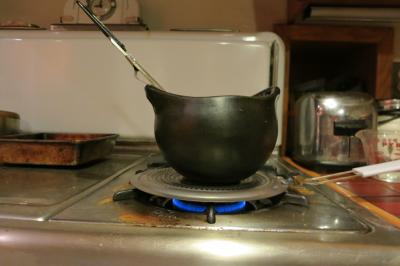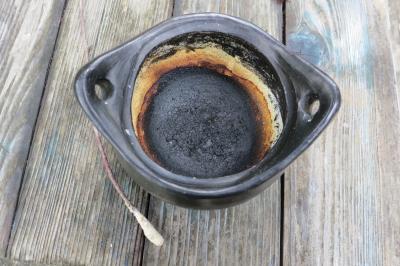Melanie J. Miller, Helen L. Whelton, Jillian A. Swift, Sophia Maline, Simon Hammann, Lucy J. E. Cramp, Alexandra McCleary, Geoffrey Taylor, Kirsten Vacca, Fanya Becks, Richard P. Evershed & Christine A. Hastorf. Interpreting ancient food practices: stable isotope and molecular analyses of visible and absorbed residues from a year-long cooking experiment, Scientific Reports volume 10, 13704 (27 August 2020)
https://www.nature.com/articles/s41598-020-70109-8 (Open Access)
See the UC Berkeley news summary.
A research paper has been released on August 27th in Scientific Reports that was co-authored by 7 UC Berkeley affiliates (1 professor, 4 former PhD students, 1 current PhD student, and 1 former undergrad URAP student) and a handful of other collaborators, which we hope to share with the UCB community.
The research project started with an UCB Anthropology graduate seminar on the 'Archaeology of Food,' led by Professor Christine Hastorf (Professor of Anthropology; Director of the Archaeological Research Facility). One week our seminar group focused on the organic residues that can be found on the surfaces and inside the actual clay matrix of ancient pottery. Reading through the archaeological science literature, we identified some areas where we thought a novel experimental archaeological chemistry project could contribute new knowledge.
We had a team of seven archaeologist-chefs (Professor Hastorf plus 6 PhD Students; 5 of us were Berkeley PhD students and 1 was a visiting PhD student from Stanford and a former UCB undergrad) who each cooked a specific recipe once per week in the same clay pot over the course of a year. At scheduled cooking events all chefs allowed the meals cooking in the pot to burn, so as to mimic the conditions under which some organic residues are found in archaeological pottery. We collected residue samples throughout the experiment, and at the end of the year we changed our recipes to track how the chemistry of three different residue forms (charred food macro-remains, thin-layer carbonized patinas, and absorbed lipids) reflected the stable isotope chemistry of the previously cooked ingredients. Our UCB team conducted bulk stable isotope analysis on two of the residue forms (the charred macro-remains and the carbonized patinas) at the Center for Stable Isotope Biogeochemistry at UC Berkeley, and we teamed up with colleagues from the University of Bristol, UK to analyze the absorbed lipid residues. Our results indicate that the three different residue forms reflect different cooking timelines of the life-history of the pot: (1) the isotopic chemistry of the charred food macro-remains indicate the final ingredients cooked, (2) the thin-layer carbonized patina residue isotopic chemistry reflects mostly the final ingredients cooked, but also retains some chemical hints of previously cooked ingredients, while (3) the absorbed lipid residue shows a longer-term picture of the foods cooked in the pot and lipids were not quickly replaced when meal ingredients were changed. These data can help us better reconstruct the meals and specific ingredients that people consumed in the past, which in turn can shed light on social, political, and environmental relationships within ancient communities.
Press Release
Analysing three components of ceramic cooking pots ― charred remains, inner surface residues and lipids absorbed within the ceramic walls ― may help archaeologists uncover detailed timelines of culinary cooking practices used by ancient civilizations. The findings, from a year-long cooking experiment spear-headed by three archaeological scientists (Miller, Whelton, and Swift), are published this week in Scientific Reports.
Seven archaeologists repetitively cooked the same ingredients in unglazed ceramic pots once per week over the course of one year, then changed recipes for the final cooking event to study whether remaining residues may represent the last meal cooked or an accumulation of cooking events over the total amount of time a vessel has been used. Recipes included ingredients such as wheat, maize and venison.
Chemical analysis of the carbon and nitrogen isotopic values of residues present in the ceramic pots, contributed by carbohydrates, lipids and proteins from the meals cooked, suggest that the remains of burnt food left within each vessel represent the final ingredients and change with each meal. The chemical composition of the thin residue layer formed on the inside surface of the cooking pot and in most direct contact with the food when cooking represents a mixture of previous meals, but most closely resembles that of the final meal. Further analysis also suggests that lipids are absorbed into the walls of the ceramic vessel over a number of cooking events and are not immediately replaced by the new recipes but are instead slowly replaced over time, representing a mixture of the ingredients cooked over the total amount of time the vessel was in use. Analysis of all three residues reveal cooking events across different time scales for ceramic vessels and may enable archaeologists to better understand the various resources used by ancient cultures and to estimate the lifespan of pottery used in meal preparation.







